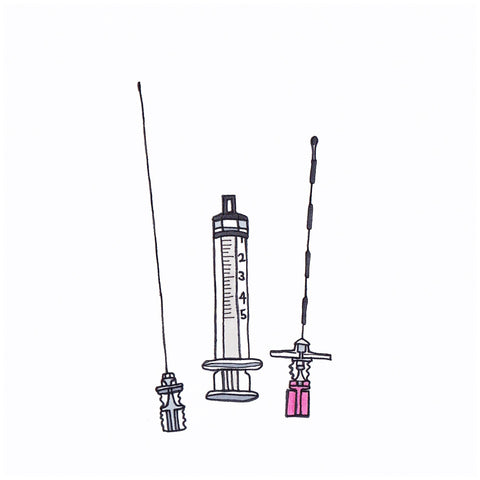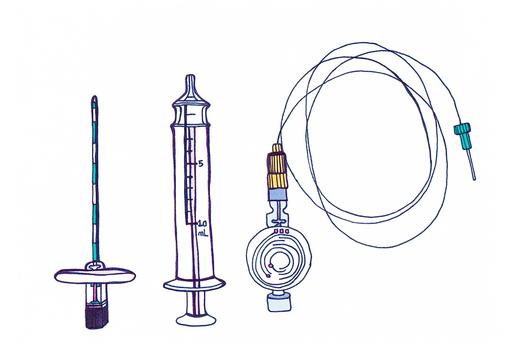Epidural blocks vs. natural birth?
It’s the question every mother debates as each trimester passes. To some, it’s a no brainer. There is absolutely no way they are going to go through that much pain and anxiety voluntarily. While to others, the pain is just one part of the birthing experience, something they will remember forever.
While injections of localized anesthesia allow for a painless delivery so a new mother can better appreciate the life they are being introduced to, natural births are attractive to many who don’t want to introduce any sort of unnatural drugs to their baby, whatsoever.
Either way, there needs to be plenty of research involved to factor in all the options and to properly understand the benefits and risks of each. Signing up for birthing classes will give you and your partner a good idea of what to expect, as will asking your doctor specific questions. (Write them down before going in for your appointment as it’s easy to forget in the sea of information you’ll be given).
Now, let’s focus on the pros and cons of each option...

Epidurals
An epidural is a form of spinal anesthesia that increases comfort by relieving pain from the waist down so that contractions don’t feel so fierce. According to a 2018 study by Stanford Medicine, 71% of pregnant women get epidurals or other spinal anesthesia.
Because pain starts in your uterus and travels via the nerves in the spine or backbone, when the epidural is delivered to the base of the spine, intense sensations are prevented before they reach the brain.
Epidurals can be delivered in a few different ways.
A regular epidural is given through a catheter and then taped to your back, staying for the duration of labor. This option can last for as long as 24-36 hours and makes it so small amounts of the medicine may be given throughout labor as pain calls for it, focusing on the various areas that may need more attention.
A combined spinal epidural (CSE) or “walking epidural” is a lower-dose option which uses smaller amounts of drugs and is administered through a single needle into the spinal canal via the lower back (typically lasting between 1.5-3 hours). Lowering pain, but not to the point of being totally numb, this is an option many expectant mothers prefer so they can still feel and be in control of what’s going on while maintaining a certain level of comfort.
While both types of epidurals provide relief, it’s important to know that they aren’t instantaneous. They need about 15-20 minutes to start working, and can take at least a half hour to properly arrange for one. (Pre-epidural preparations include labs, an IV, paperwork, a bathroom break, and a consultation with the anesthetist -- so don’t wait until the last minute if you are planning on having one!)
Common side effects for epidurals can include hypotension (lowered blood pressure), nausea, itching, and a sore back. Much more rare side effects can include fever and a spinal headache, which occurs in less than 1% of patients.
While the amount of meds delivered to the bloodstream that will reach the baby is very limited during either type of epidural, the fact that the baby may, indeed, be absorbing some of the drugs is what pushes many mothers to opt for a natural birth.
Natural Birth
Those choosing to give birth naturally feel that fully experiencing your contractions is valuable in that your body inherently knows what to do and will guide itself to move in a way that aids in the birthing process. (In fact, epidurals didn’t become common for pain relief during labor until the 1940’s.)
Some also argue that when labor pains are increased, endorphins are as well, and blocking those pains can also numb endorphins. Additionally, the ability to stay at home longer, to move around free from machines, and to avoid being excessively monitored are all more reasons why women may choose to go the natural route.
Having a doula and taking classes like HypnoBirthing and Lamaze will help a woman (and her partner) learn to practice breathing and meditation techniques to help maximize relaxation. Massages, acupressure, heat packs, and frequent changes in position can also assist in comfort levels.
Other than considerably more pain, the cons of a natural birth can include added tearing in the vaginal wall area, as well as the development of hemorrhoids and bowel issues due to the need for stronger pushing.
While there is no one choice that works for everyone, discussing these options with your medical team and loved ones will help you best prepare for birth. Deciding factors to consider when making the decision should include your overall health and wellbeing, pain tolerance, intensity of contractions, pelvis size, and the size and position of the baby.
No matter what route you choose to go, to avoid disappointment try not to be too hard set on any one idea as things can often change in the heat of the moment. Now, push!


